The Maine Monument at Columbus Circle is one of the most beautiful in Manhattan. Architect Harold Van Buren Magonigle, and sculptor Attilio Piccirilli, there provided us with an object lesson in memorial design that is more important and more relevant now than ever. What it does, and what all monuments should do, is very simple: it tells a story that we have a duty to remember.
The monument was built in memory of the 258 American sailors who perished when the battleship Maine mysteriously exploded in the harbor of Havana, Cuba, an event which provoked the Spanish-American War. It is composed of a central pylon and four gatehouses which together effectively form a gate to Central Park. Completed in 1912, it continues to hold its own, despite recent contributions to the Circle.
The pylon has a ship’s prow in front set in a pool of water. The heroically scaled allegorical figure Columbia Triumphant stands on top, and Victory stands out front. The four sides of the pylon provide a place for other allegorical figures.
The sculpture group in front is entitled: “The Antebellum State of Mind: Courage Awaiting the Flight of Peace and Fortitude Supporting the Feeble.” Peace stands over Courage to her right, and Fortitude to her left. The young lad in front holds his hands in the sign of victory. The prow of the ship is guided by dolphins, as though Nature herself were an ally. And it is modeled on the ancient Roman battleship with its prominent ram, as if to embody the ideals of the Roman Republic which inspired the constitution of the United States.
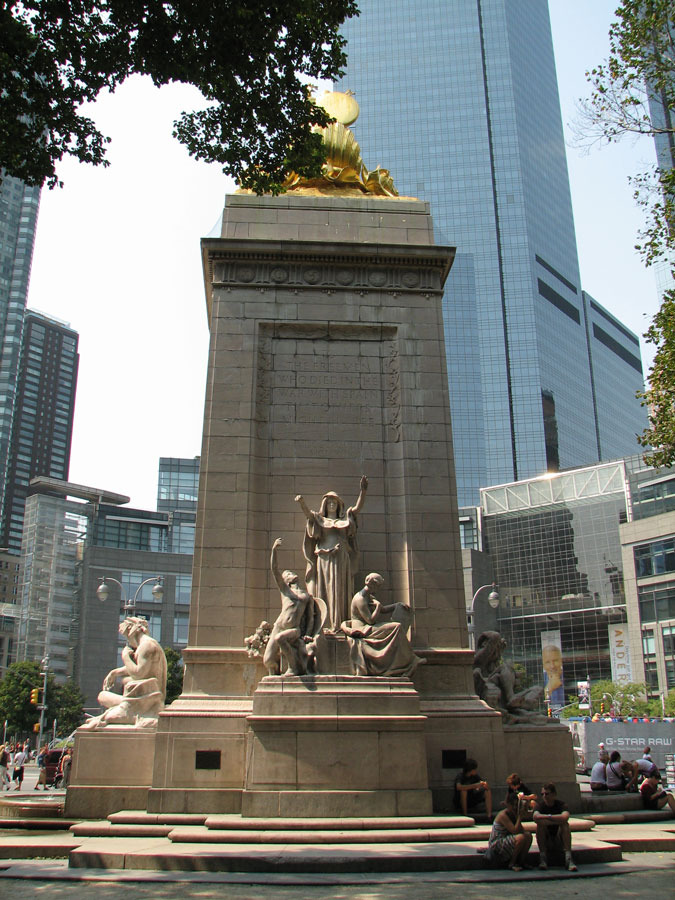
The sculpture grouped behind is entitled: “The Post-Bellum Idea: Justice Receiving Back the Sword Entrusted to War.”
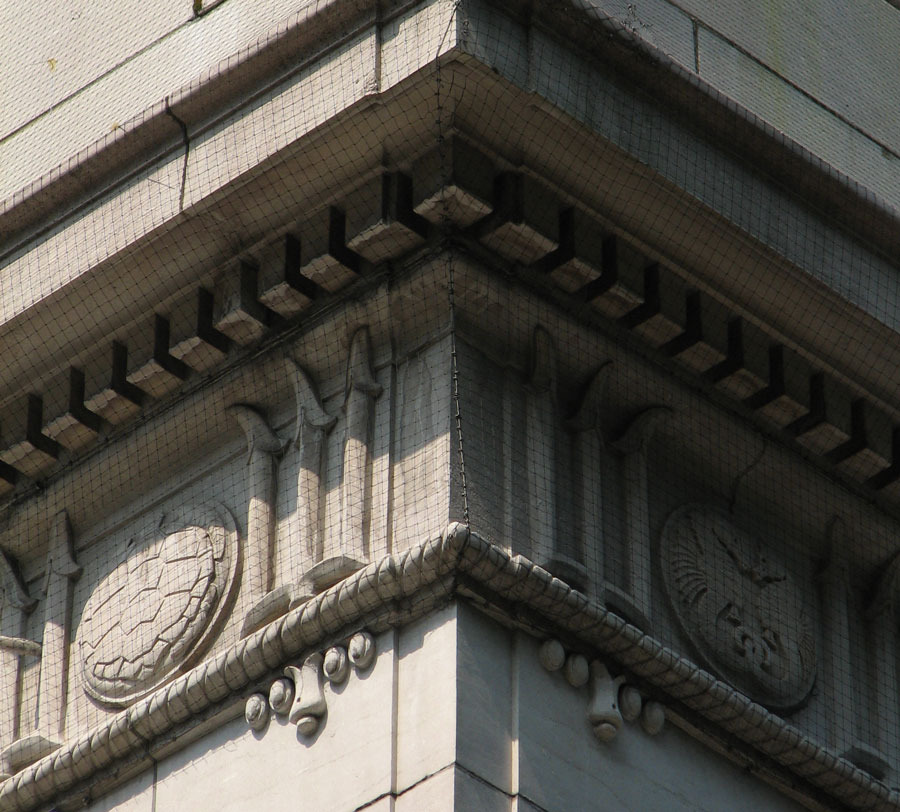
Tridents and sea creatures are a clever variation on the triglyphs and paterae we expect to find in a Doric entablature.

A rope molding continues the nautical theme. Flowers and leaves sprout from the seemingly living pedestal.
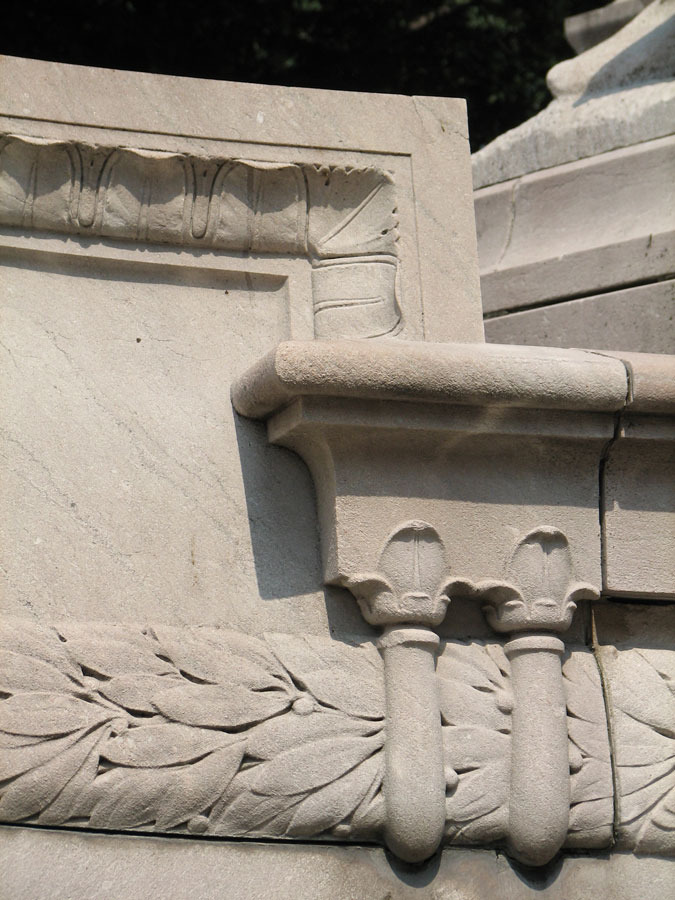
The prow is festooned with victory laurels secured by floral hitches. Acanthus leaves, symbolic of resurrection from time immemorial, crown it.

What could be more appropriate than an eagle figurehead? Fish scales cover the volute making the boat more of a chimera than an inanimate object.
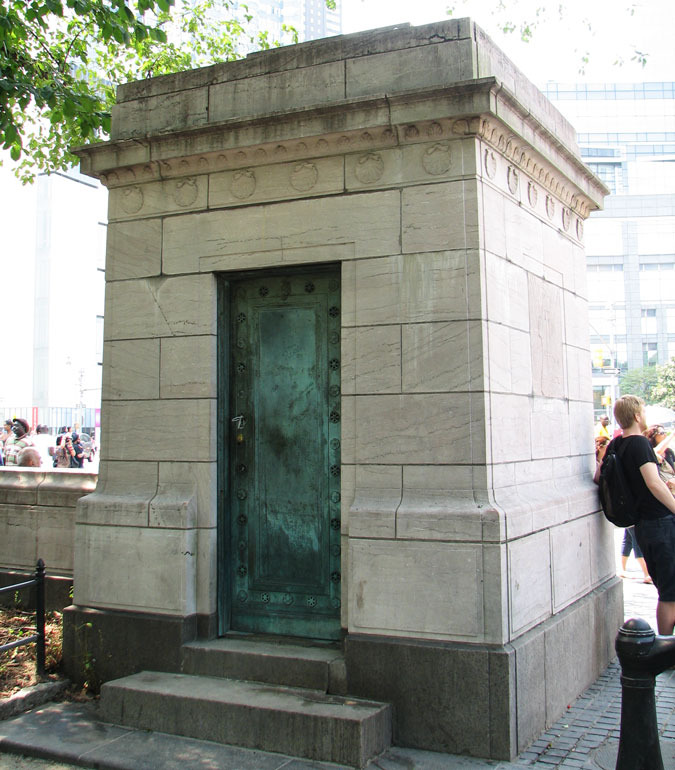
The sturdy gate houses each have a bronze door on one side and bas-reliefs on the other three. The simpler entablatures are decked with shells.
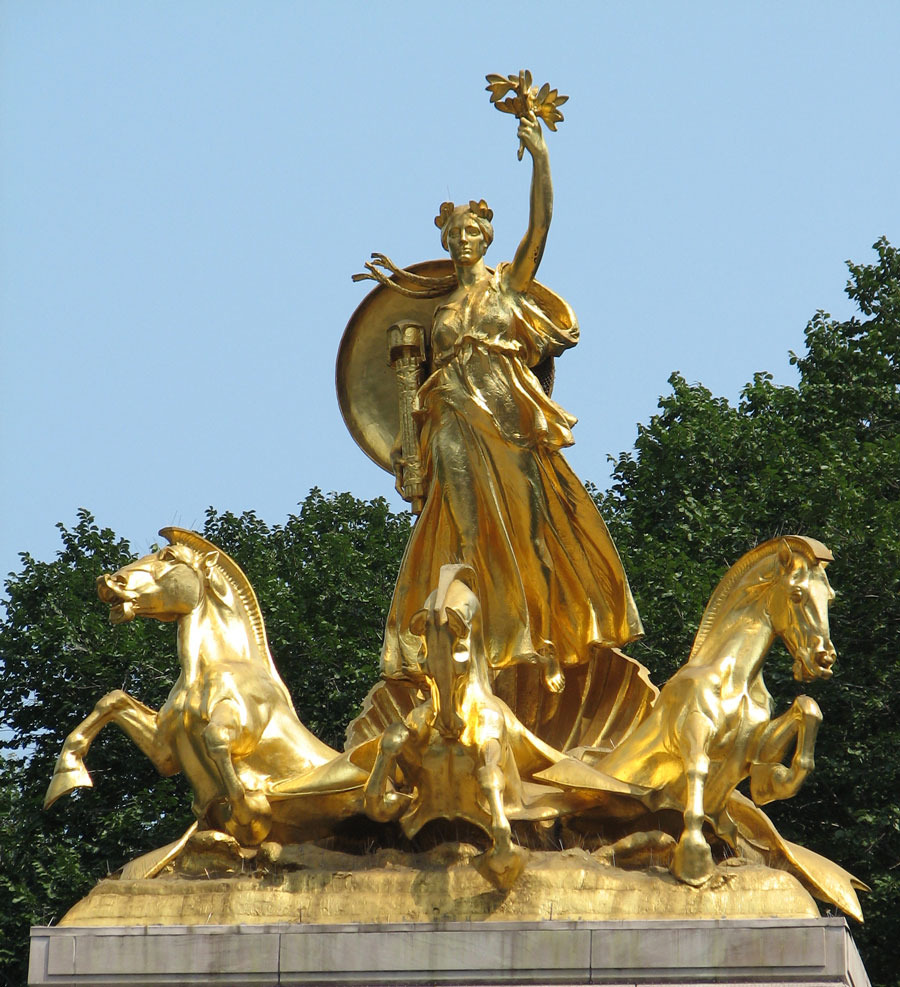
And the crowning element of it all, in glorious gilded bronze cast from metal recovered from the Maine: three hippocampi pull Columbia over the seas she now rules.
This monument is far from mute–it speaks, it informs us, and with poetry. It employs elegant rhetoric to enlighten us of the grave issues that were at stake in this event in the life of the body politic: the just war, the courage and fortitude required to pursue a just cause, and just rule in the wake of a hard-won victory. This ballad in stone and bronze is beautifully designed to help generations remember the Maine.
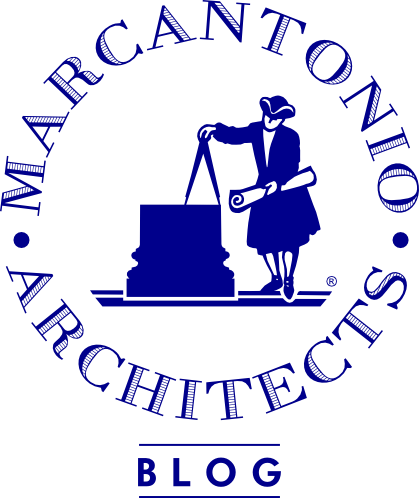
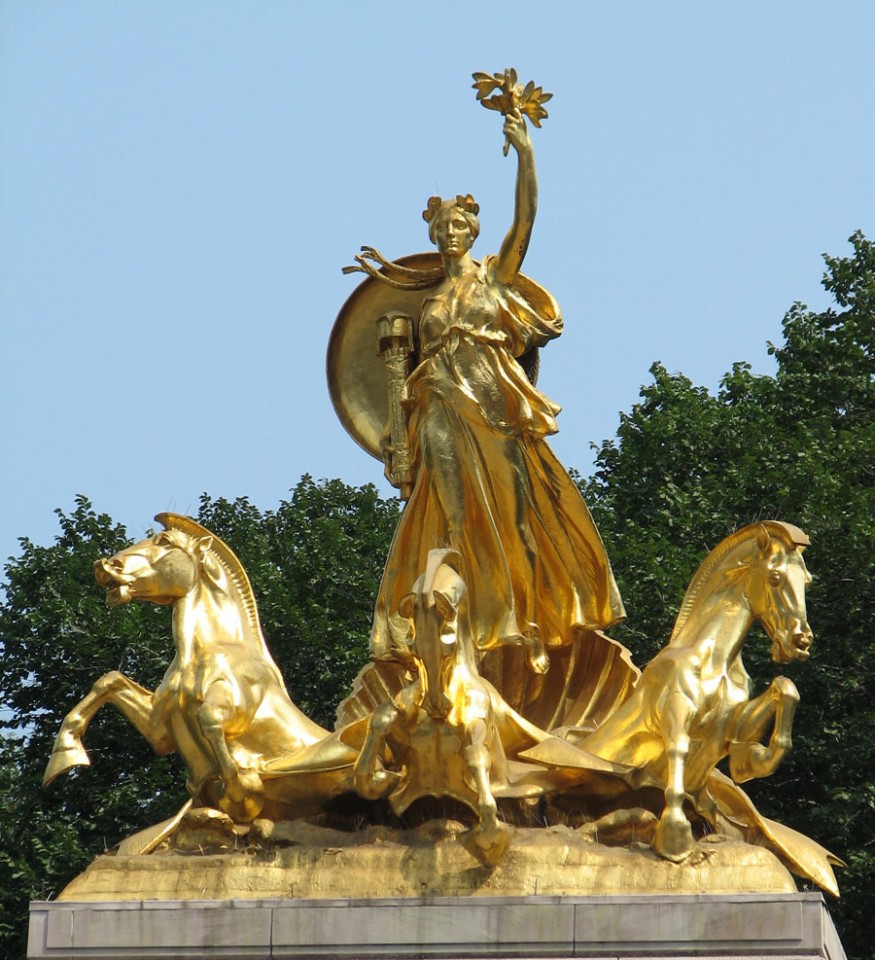
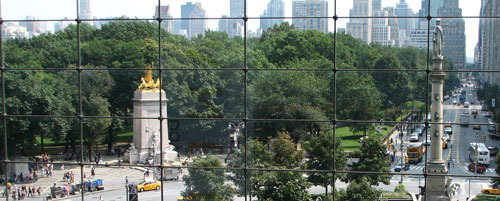
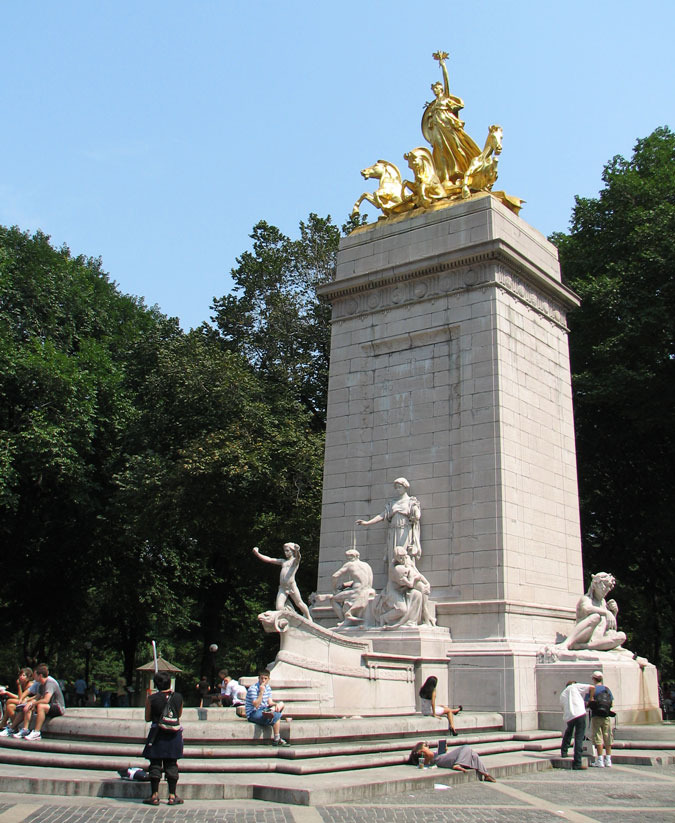
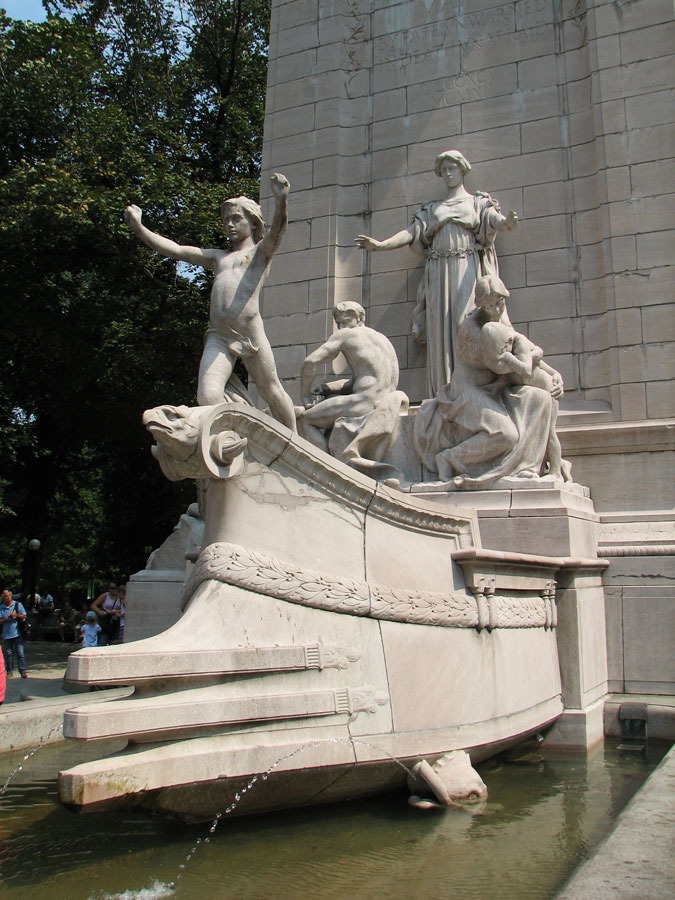
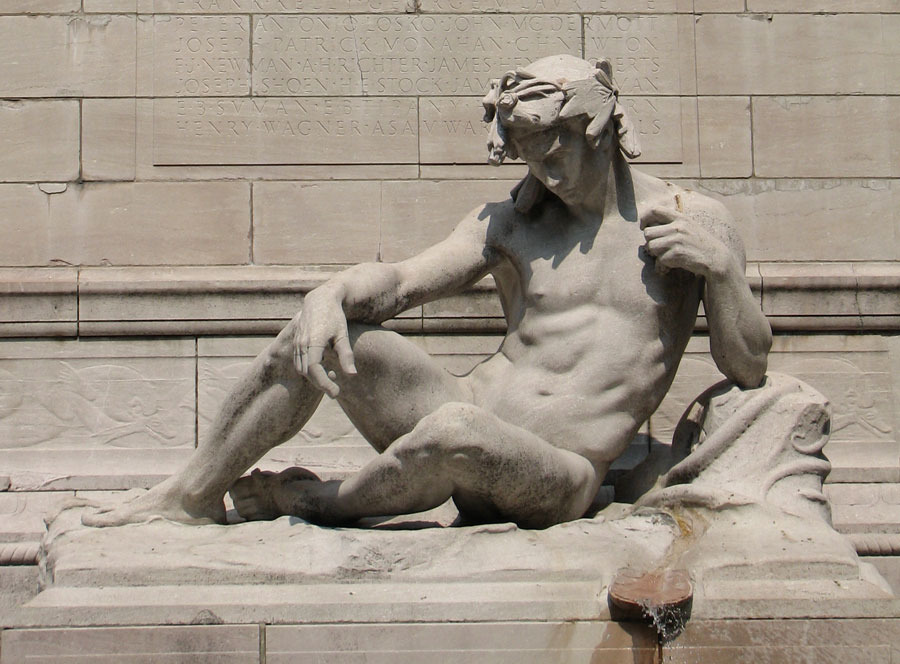

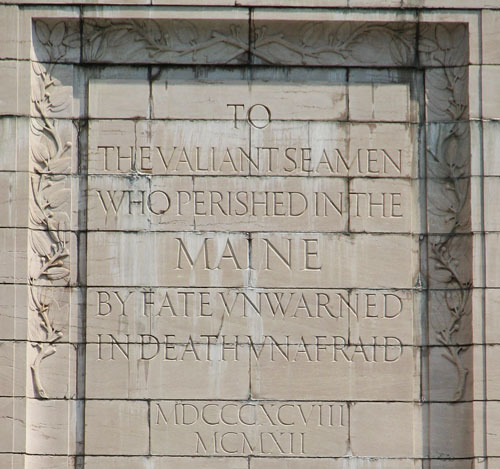
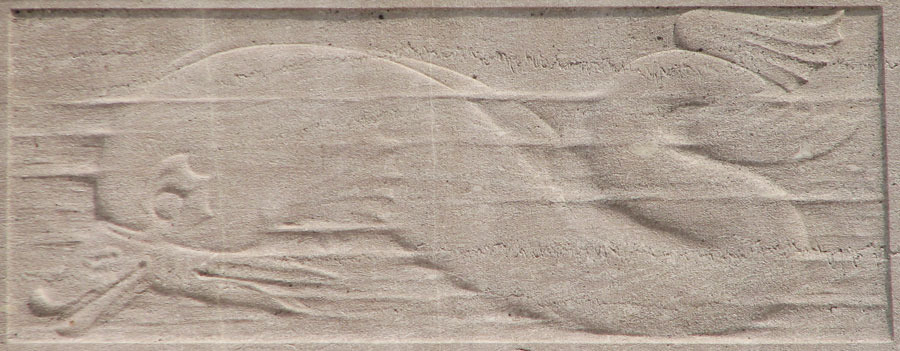
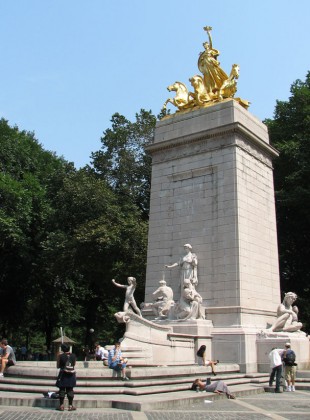
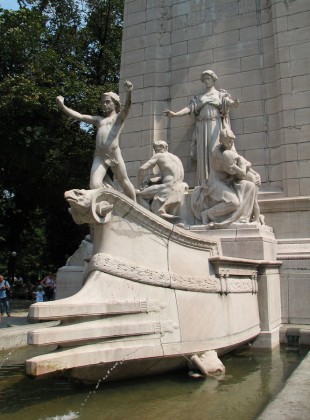
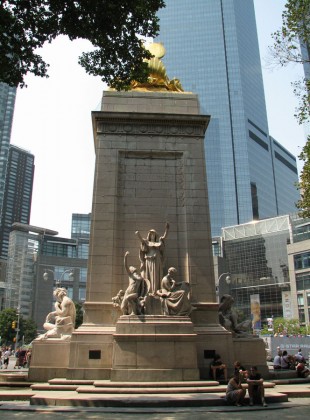
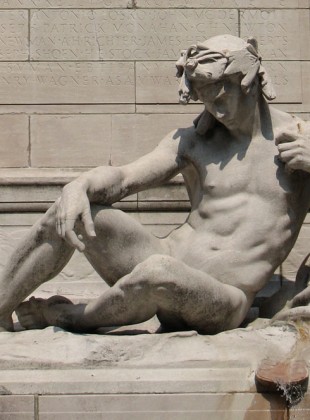
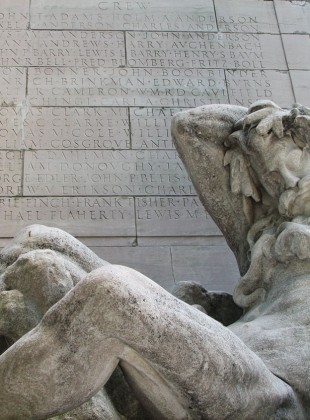
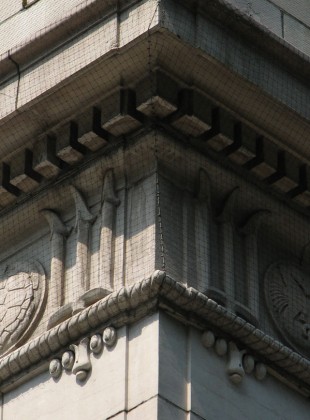
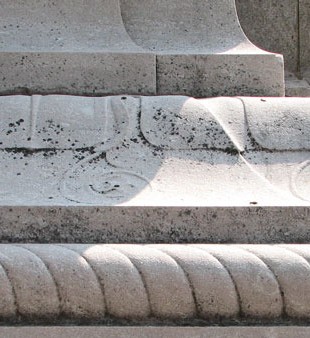
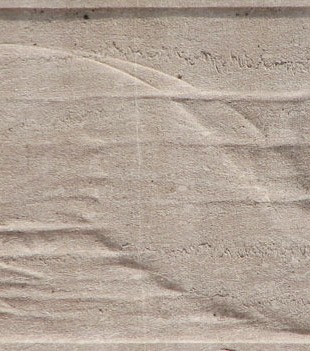
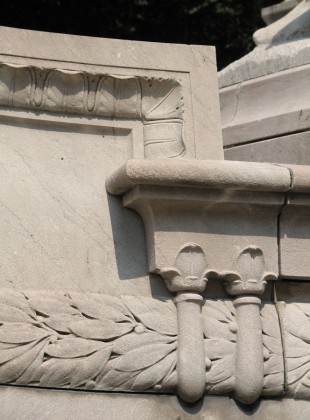
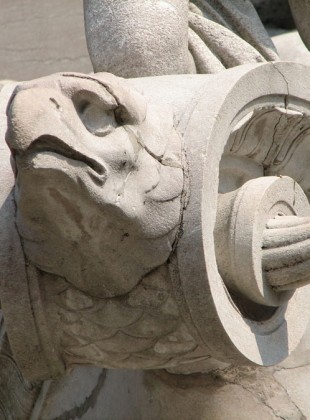
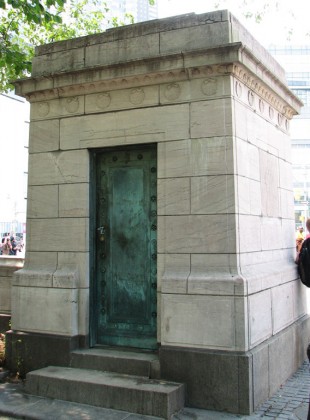
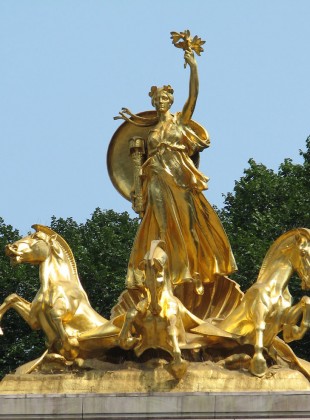
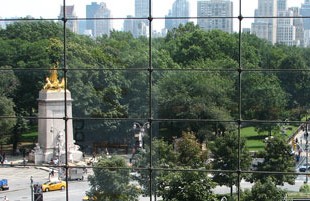
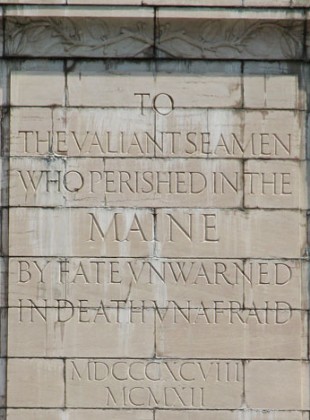
Dear Dino,This is indeed a lovely monument from the aesthetic point of view, and many of its details are quite wonderful. Please elaborate, though, on your assertion at the end that such a monument is a poetic essay on just war, just cause, and just rule. From the perspective of many who are not taken with patriotic, imperialist propaganda and bellicose rhetoric, the Spanish-American War does not quite meet those standards.
I have often noticed this moumnet, but now I cann appreciaet what all the details mean. The classic, noble vision of life endures even in these decadent times….
I cannot comment on whether the Spanish-American War met the standards of a just war or not as I am not a historian and am not well enough versed in the facts of the matter. It would also be outside the point of this blog, which is about the architecture. I will say, though, that ideals like justice, fortitude, and courage, are part and parcel of a culture which values beauty.
I expect that the designer consciously borrowed the ship’s prow from Roman rostral columns. How interesting and appropriate to use that motif to memorialize a loss rather than a victory.
Good point; however, the monument does also mark the United States' victory over the Spanish.
In the top photo I notice a “conventional” rostral column on the right…do you know what it remembers?
That's Christopher Columbus. The monument was erected in 1892, on the 400th anniversary of the discovery of America.
Dino, This is indeed a beautiful piece of civic art. It is interesting how the canonical elements of architecture were cleverly transformed to convey a message. It is also interesting to see the inspiration behind some of the human figures, which though stylized in the Belle Époque manner, make reference to a more ancient and noble precedent: The Atlantic borrows from Michelangelo’s Adam, the Pacific from the Medici Chapel’s Night, and the crouching figure in the ship takes his pose from one of the ignudi on the vault if the Sistine. Cheers
Excellent points!
Re: “what could be more appropriate than an eagle figurehead”, have you seen the figurehead “Triumphant” carved for remake of USS Hornet of 1805, now housed at the Naval Academy in Annapolis?
I have. Beautiful work.